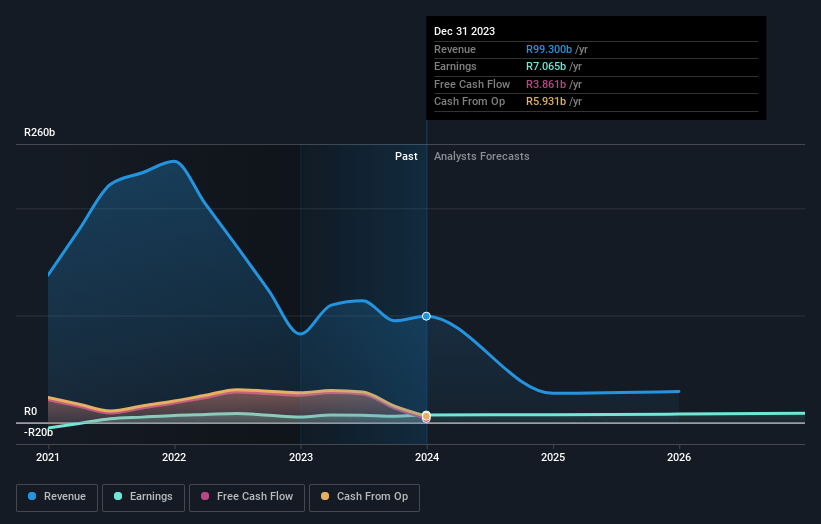Even after rising 3.6% this past week, Old Mutual (JSE:OMU) shareholders are still down 12% over the past five years
For many, the main point of investing is to generate higher returns than the overall market. But the main game is to find enough winners to more than offset the losers So we wouldn't blame long term Old Mutual Limited (JSE:OMU) shareholders for doubting their decision to hold, with the stock down 45% over a half decade. On the other hand, we note it's up 9.3% in about a month. However, this may be a matter of broader market optimism, since stocks are up 5.6% in the same time.
The recent uptick of 3.6% could be a positive sign of things to come, so let's take a look at historical fundamentals.
See our latest analysis for Old Mutual
There is no denying that markets are sometimes efficient, but prices do not always reflect underlying business performance. One way to examine how market sentiment has changed over time is to look at the interaction between a company's share price and its earnings per share (EPS).
Old Mutual became profitable within the last five years. That would generally be considered a positive, so we are surprised to see the share price is down. Other metrics might give us a better handle on how its value is changing over time.
The most recent dividend was actually lower than it was in the past, so that may have sent the share price lower. The revenue decline of 2.9% per year wouldn't have helped. So it seems weak revenue and dividend trends may have influenced the share price.
You can see how earnings and revenue have changed over time in the image below (click on the chart to see the exact values).
We know that Old Mutual has improved its bottom line over the last three years, but what does the future have in store? This free interactive report on Old Mutual's balance sheet strength is a great place to start, if you want to investigate the stock further.
What About Dividends?
When looking at investment returns, it is important to consider the difference between total shareholder return (TSR) and share price return. Whereas the share price return only reflects the change in the share price, the TSR includes the value of dividends (assuming they were reinvested) and the benefit of any discounted capital raising or spin-off. Arguably, the TSR gives a more comprehensive picture of the return generated by a stock. We note that for Old Mutual the TSR over the last 5 years was -12%, which is better than the share price return mentioned above. This is largely a result of its dividend payments!
A Different Perspective
It's good to see that Old Mutual has rewarded shareholders with a total shareholder return of 16% in the last twelve months. Of course, that includes the dividend. There's no doubt those recent returns are much better than the TSR loss of 2% per year over five years. The long term loss makes us cautious, but the short term TSR gain certainly hints at a brighter future. It's always interesting to track share price performance over the longer term. But to understand Old Mutual better, we need to consider many other factors. For example, we've discovered 2 warning signs for Old Mutual (1 is concerning!) that you should be aware of before investing here.
Of course Old Mutual may not be the best stock to buy. So you may wish to see this free collection of growth stocks.
Please note, the market returns quoted in this article reflect the market weighted average returns of stocks that currently trade on South African exchanges.
Have feedback on this article? Concerned about the content? Get in touch with us directly. Alternatively, email editorial-team (at) simplywallst.com.
This article by Simply Wall St is general in nature. We provide commentary based on historical data and analyst forecasts only using an unbiased methodology and our articles are not intended to be financial advice. It does not constitute a recommendation to buy or sell any stock, and does not take account of your objectives, or your financial situation. We aim to bring you long-term focused analysis driven by fundamental data. Note that our analysis may not factor in the latest price-sensitive company announcements or qualitative material. Simply Wall St has no position in any stocks mentioned.

 Yahoo Finance
Yahoo Finance 
